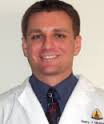MedicalResearch.com Interview with:
Jiyon Lee, M.D.
Assistant Professor of Radiology, NYU School of Medicine
NYU Cancer Institute, Breast Imaging Center
New York, New York 10016
Medical Research: What is the background for this study? What are the main findings?
Dr. Lee: Even before the USPSTF changed their breast screening guidelines in 2009, I conducted community outreach to help educate others on my area of expertise, breast imaging and breast screening. I presented lay friendly, illustrated, and practical explanations in a structured talk, about the big picture and the salient details, in a way that I would want if I were not a breast radiologist. As is customary for such community outreach, we solicited feedback from attendees. It was gratifying to hear the positive responses. That they wished for such education for others served as a clarion call that is understandable. Education should be objective and noncoercive. “Knowledge is power,” but only if complete and accurate.
Breast cancer is still a common disease, we are all at least at average risk, and screening is still standard of care. Much of the debate surrounding screening mammography centers on the age of onset of screening and the optimal screening interval. The USPSTF states that shared-decision making between women and their providers may occur, especially for women in 40-49 year group. But the TF does not stipulate when or how or by whom this talk will ensue, and notice that their guidelines refer to film mammography, and “biennial” mammography.
Since the time of this manuscript, the American Cancer Society issued new guidelines on 10/20/2015 that among its bullet points emphasized annual mammography for women 45-54 years and deemphasized clinical breast exam, while supporting option to start annually at age 40 with shared decision making to weigh what are referred to as “risks” and benefits. Although the fine print does reaffirm that annually starting at age 40 is the screening model that saves the most lives, the ACS is encouraging deliberate value judgment regarding “risks” and “harms.” Their fine print is also intimating that women 55 and over have nondense tissue and that their cancers are indolent. The ensued publicity and mixed messaging have caused another cycle of confusion regarding breast cancer screening. As the experts in this field of image-based screening, radiologists have opportunity to clarify and contextualize the issues and details of the screening discussion, and can do so with objectivity, respect for all sides of the debate, and compassion. All responsible ways to continually educate both women and all providers will enable both sides to engage in the discussion fairly. Because as we discourage paternalistic medicine and promote shared decision making, it’s not fair play if all responsible sides do not get fair say. Do realize that not all women see providers regularly, and depending on the medical subspeciality, not all providers are mentioning screening til women reach a certain age and may not relay importance of the physical exam components that complement imaging.
This article specifically highlights how such direct and interactive public education can effect potential benefit in two ways.
- First, directly reduce one of the core criticisms about screening: the “anxiety” that women may experience, which is heavily weighed as a “harm” of screening. Most women do not experience high anxiety, and are glad to have a test that may help them. And education can help demystify much of the process and protocol, and explain up to what may be that patient’s next test results if she engages in screening at all. No one can tell that.
- Two, education can directly increase one of the necessary components of shared decision making that is presumed in implementing breast screening: informing women. The pre- and post-lecture questionnaire, along with fact-based quiz questions, provided insight and enabled learning opportunity for the audience that are not usual for community outreach. Education that keeps on going—and is shareable!-- after the lecture is done.
(more…)








